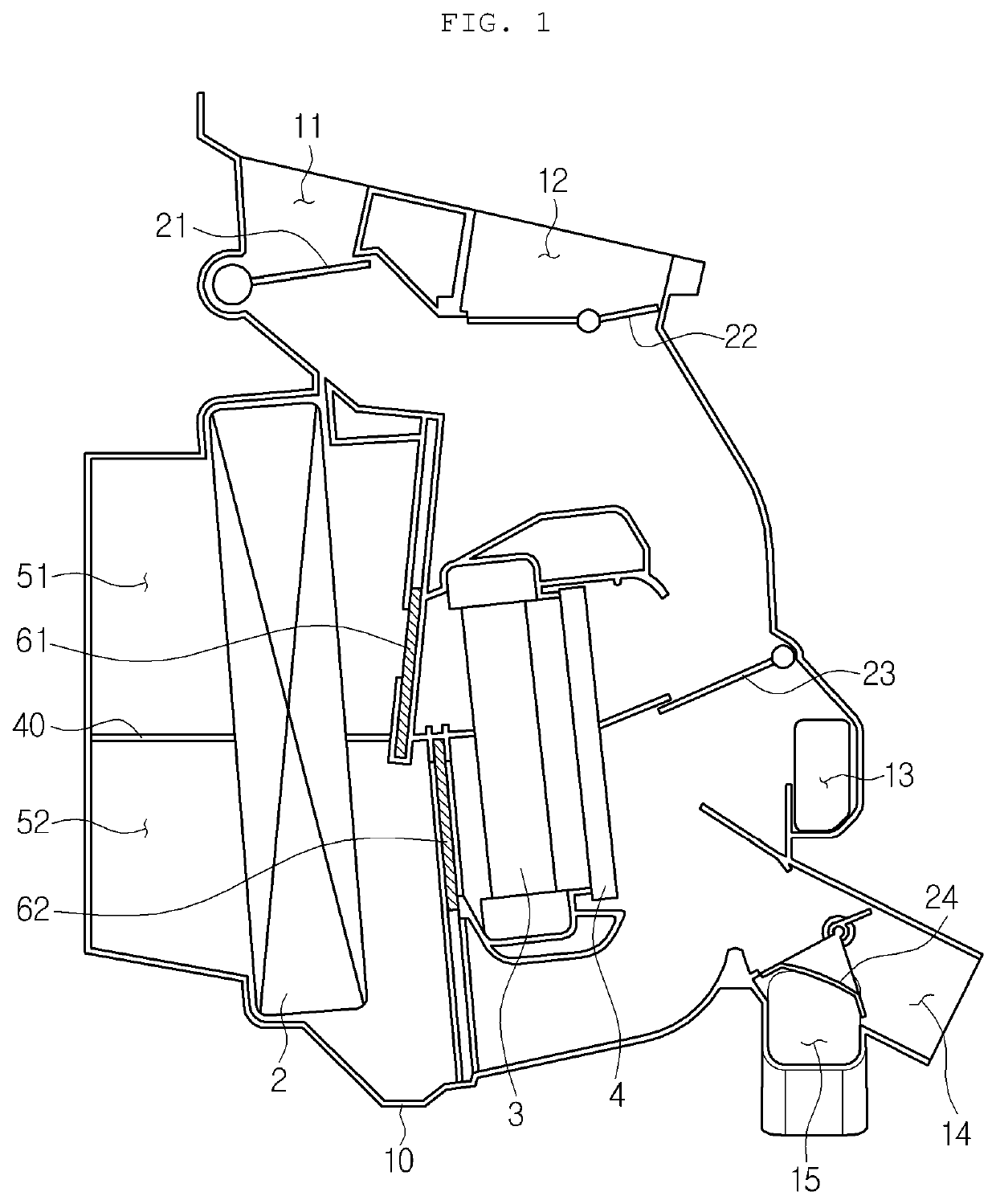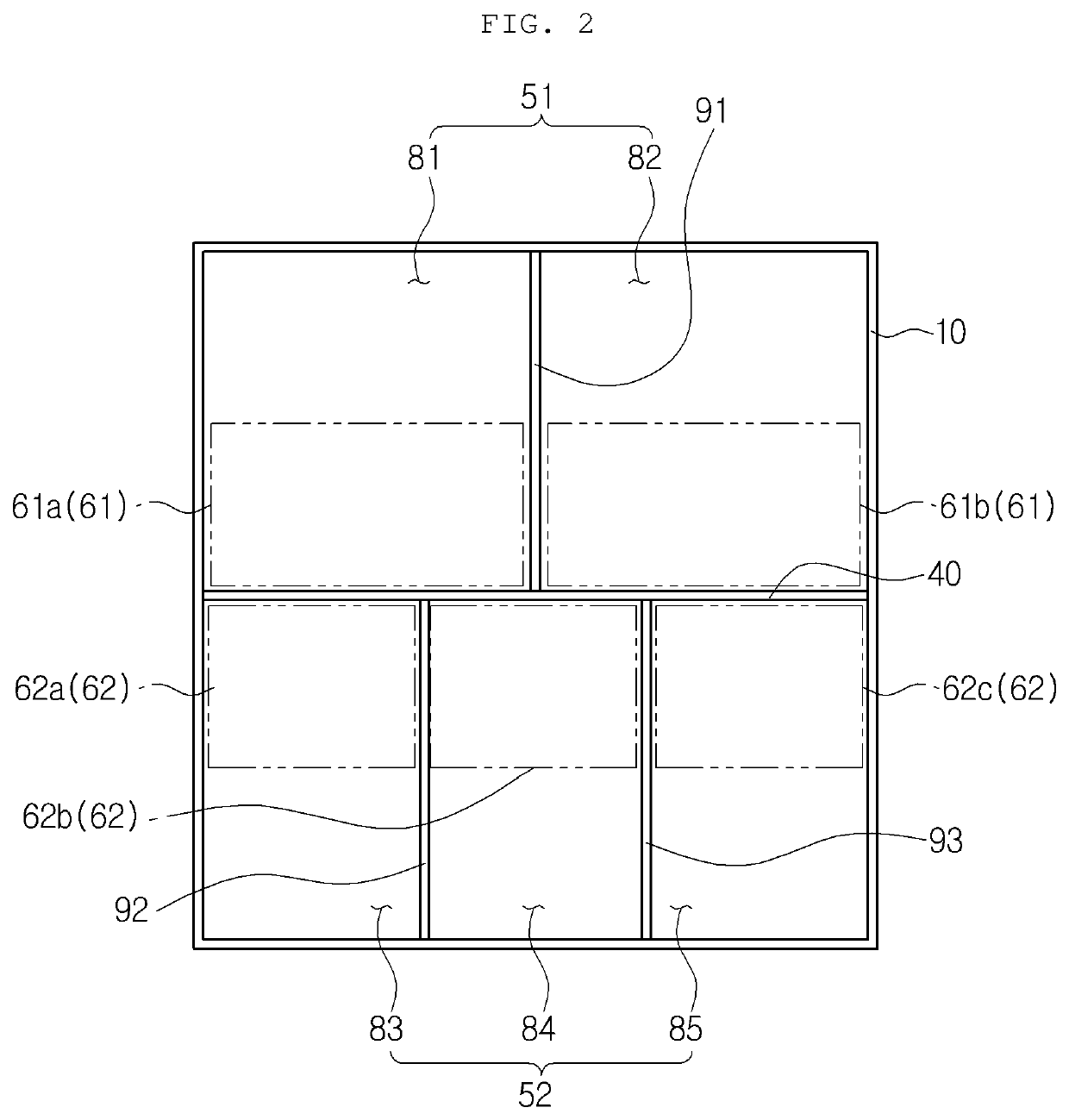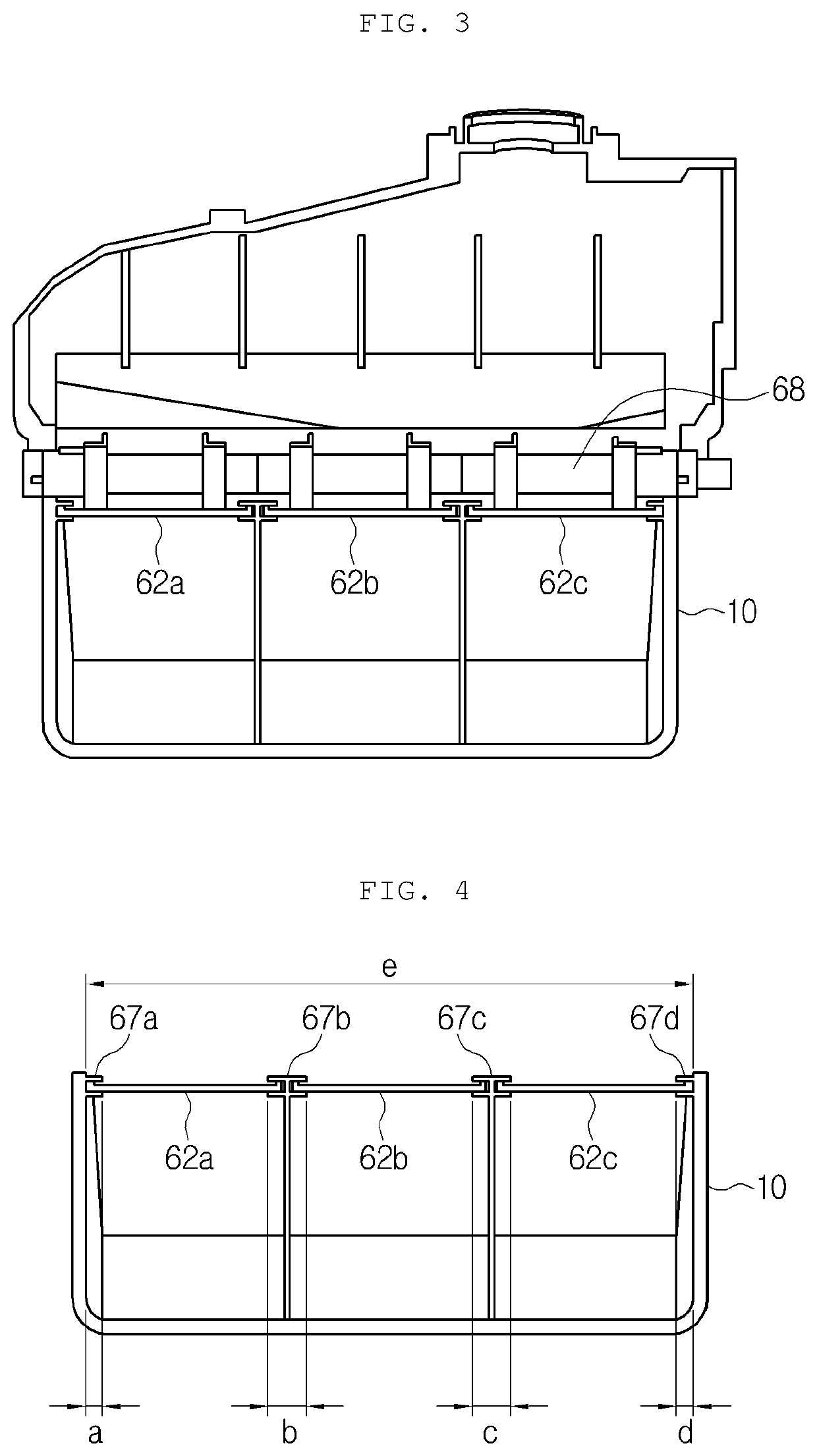Air conditioner for vehicle
a technology for air conditioners and vehicles, applied in vehicle components, vehicle heating/cooling devices, transportation and packaging, etc., can solve the problems of air passages narrow, air volume reduction, indoor temperature drop, etc., to increase the effective region of air, reduce ventilation resistance, and increase air volume
- Summary
- Abstract
- Description
- Claims
- Application Information
AI Technical Summary
Benefits of technology
Problems solved by technology
Method used
Image
Examples
first embodiment
[0087]Referring to FIG. 7 as a first embodiment, the shaft 168 includes a gear part for transmitting driving power to the door. In this instance, the gear part of the shaft driving one door is larger in diameter than the gear part of the shaft driving another door. In detail, the gear part includes: a side gear part 1641 for driving the lower left temperature door 1621 and the lower right temperature door 1623; and a center gear part 1642 for driving the lower center temperature door 1622. The center gear part 1642 is larger in diameter than the side gear part 1641.
[0088]Through such a configuration, the lower center temperature door can be effectively operated when only the diameter of the gear part of the shaft is designed differently without changing the shape of the door.
[0089]FIG. 11 is a perspective view illustrating a lower center temperature door of the air conditioner for a vehicle according to another embodiment of the present invention, FIG. 12 is a plan view of FIG. 11, ...
second embodiment
[0090]Referring to FIGS. 11 to 14 as a second embodiment, the gear parts of the shaft 168 are all formed in the same diameter. In this instance, the gear part of one door part engaged with the gear part of the shaft 168 protrudes toward the gear part of the shaft 168 compared to the gear part of the other doors. That is, the gear part of the lower center temperature door 1622 protrudes further toward the shaft 168 than the gear part of the lower left temperature door 1621 and the lower right temperature door 1623.
[0091]In detail, the lower center temperature door 1622 includes a flat plate part 621, a gear part 622, a first stiffness reinforcing part 623, second stiffness reinforcing parts 624 and 625, and a third stiffness reinforcing part 627. The flat plate part 621 is formed in a thin plate shape and forms a main body of the door. The gear part 622 is formed on one surface of the flat plate part 621 and is engaged with the gear part of the shaft 168. The gear part 622 is extende...
PUM
 Login to View More
Login to View More Abstract
Description
Claims
Application Information
 Login to View More
Login to View More - R&D
- Intellectual Property
- Life Sciences
- Materials
- Tech Scout
- Unparalleled Data Quality
- Higher Quality Content
- 60% Fewer Hallucinations
Browse by: Latest US Patents, China's latest patents, Technical Efficacy Thesaurus, Application Domain, Technology Topic, Popular Technical Reports.
© 2025 PatSnap. All rights reserved.Legal|Privacy policy|Modern Slavery Act Transparency Statement|Sitemap|About US| Contact US: help@patsnap.com



